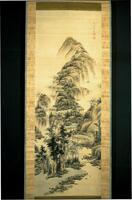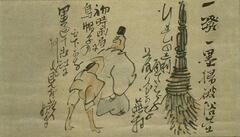133 UMMA Objects
133 UMMA Objects

Ōhara Tonshū (Donshū)
Mountain Hut among Pines
1831 – 1844
Museum purchase made possible by a gift from Helmut Stern
1985/2.27

Yamaguchi Soken (Sojun)
Japanese Beauty in a Red Maple Leaf Robe
1800 – 1832
Museum purchase made possible by a gift from Helmut Stern
1985/2.7

Torii Kiyonobu
Beauty
1925 – 1935
Museum purchase made possible by the Margaret Watson Parker Art Collection Fund
1986/1.160

Mori Tetsuzan (Tessan)
A Pair of Camels
1800 – 1849
Museum purchase made possible by the Margaret Watson Parker Art Collection Fund
1986/1.164

Nakabayashi Chikutō
Mountain Landscape in Summer
1800 – 1849
Museum purchase made possible by the Margaret Watson Parker Art Collection Fund
1982/2.56

Ikeno Taiga;Ikeno Gyokuran
Mountain Landscape
1725 – 1775
Museum purchase made possible by the Margaret Watson Parker Art Collection Fund
1983/1.354

Yokoi Kinkoku (Japanese (culture or style))
Portrait of the Poet 'Basho'
1767 – 1832
Museum purchase made possible by the Margaret Watson Parker Art Collection Fund
1968/2.22

Yosa Buson (Japanese (culture or style))
Broom, Poems, and Poets
18th century
Museum purchase made possible by the Margaret Watson Parker Art Collection Fund
1969/2.24
Loading…




